SARLAT, MEDIEVAL GEM OF THE DORDOGNE
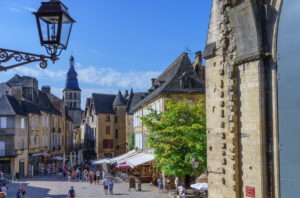
The town of Sarlat-la-Canéda is the capital of the Périgord Noir. Located between the Dordogne and Vézère Valleys, it is regarded as having one of the most beautiful and cohesive collection of medieval buildings in Europe and classified as a Ville d’Art et d’Histoire. Sarlat has the highest density of listed historic buildings per square metre in France. Every year thousands of visitors are attracted to its picturesque squares, charming medieval streets, splendid architectural heritage, multiple markets, shops and restaurants. Food lovers are drawn to Sarlat for its array of delicious local specialities, notably duck, particularly foie gras, walnuts and of course that rarest and most prized of delicacies, truffles.
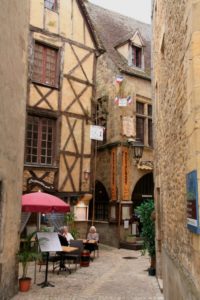
Said to have been inhabited since Gallo-Roman times, Sarlat became a prosperous city at the end of the 8th century, during the reign of Pepin le Bref and Charlemagne, when the Benedictines established a monastery there. In 937, the abbey came under the rule of Cluny, and then under the direct authority of Rome. There is a story that in 1147 Saint Bernard, passing through Sarlat on his return from the crusades, performed the miracle of the healing loaves.
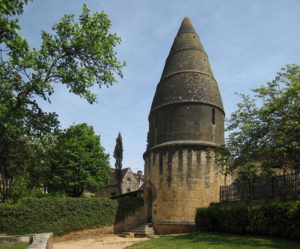
This event was commemorated by the tower of Saint Bernard, known as the Lanterne des Morts (lantern of the dead), whose curious architecture can be admired behind the cathedral dedicated to Saint Sacerdos, in the middle of what was Sarlat’s first cemetery.
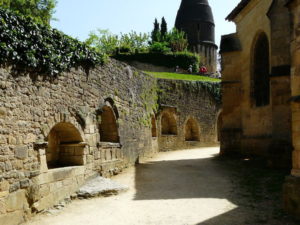
Along with so many other towns in this part of France, Sarlat suffered from the Norman invasions and then from the Hundred Years’ War, owing to its position in a frontier region between the competing kings of France and England. The town, well-fortified by its Consuls (magistrates), withstood all attacks and only became English at the end of the first part of the Hundred Years’ War in 1360, when Edward III of England renounced his claim to the throne of France in exchange for the South West of France. Ten years later, the English were chased out of France, and Sarlat became French once more. However, despite the end of the Hundred Years’ War in 1453, 100 years later the Wars of Religion then ravaged the country, and Sarlat suffered violent and terrifying times once more.
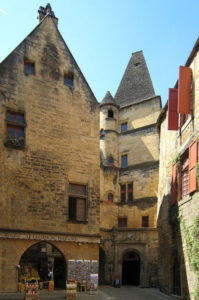
Peaceful days finally came to the town with the reign of Henri IV and his conversion to Catholicism in 1593. The following years brought the construction of the cathedral, the parish church of Ste Marie and numerous fine hôtels particuliers (town-houses). One of these was the residence of Jean de Vienne, born a pauper in Sarlat who rose to become president of the Cour des Comptes (Court of Auditors) under Henri IV, which is located on the corner of Place de la Liberté.
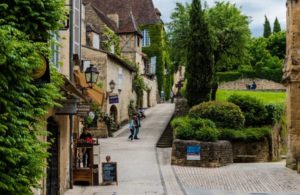
In 1552 a rebellion against the authority of Cardinal Mazarin and the young King Louis XIV marked the end of Sarlat’s peaceful and prosperous era. The town was occupied by the army and a bloodbath ensued as punishment for the rebellion. The 18th century was an era of renewal, reconstruction and peaceful prosperity. Gradually, pleasant boulevards replaced deteriorated streets and ditches and parts of the town’s ramparts were dismantled.
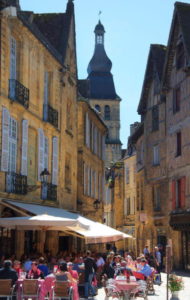
The Revolution had little impact on Sarlat. Under Napoleon, Sarlat was no longer a part of the diocese of Perigueux, which had become the Préfecture of the newly created département of Dordogne. Sarlat was given the consolation prize of being raised to the level of a ‘sous-préfecture’ of the Dordogne département, alongside Nontron and Bergerac.
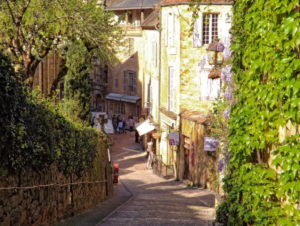
The town was often described as ‘la Belle Endormie’ (Sleeping Beauty) during the 19th century, mostly due to its remoteness in the heart of the Perigord Noir. During this time, to considerable local controversy, the rue de la République was built, cutting the old town centre in half. This street is now the main shopping axis of the town.
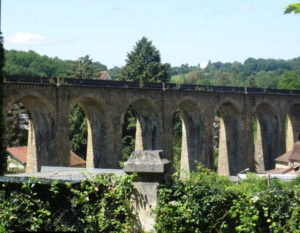
In 1882, the railway was inaugurated, which meant that Sarlat was directly reachable from Bordeaux. The beautiful 220m long Viaduc du Pontet was built to span across the valley and is visible from many parts of the town.
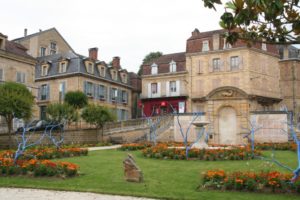
Despite being in a state of lethargy for over 150 years, Sarlat seemed to re-emerge from its long slumber about 50 years ago, when road transport supplanted river and railroad as a means of communication. However, the fact that Sarlat had disappeared off the radar was its saving grace, since its picturesque, cobbled streets, ancient quarters and many handsome buildings had avoided the fate of other towns whose hearts had been gradually destroyed by insensitive modernisation.
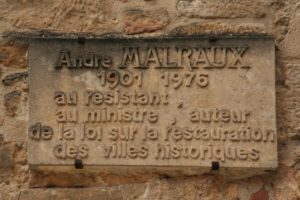
A radical new law promulgated on 04 August 1962 by Andre Malraux, known as the loi Malraux, introduced the concept of secteur sauvegardes—homogenous areas designated as heritage zones. This special classification also came with sufficient financial aid to undertake a programme of restoration. The historic façades have been returned to their original splendour and their magnificent stone roofs have been restored.
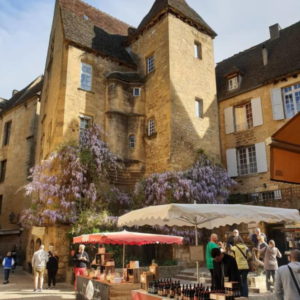
With 65 monuments and 250 listed buildings, Sarlat became a delightful, lively town with many other architectural treasures also waiting to be discovered. As the pilot for this program, the town has become the model for the effectiveness of the loi Malraux, which has since been the saviour of so many other French towns and villages. It comes as no surprise to learn that Sarlat has been used as the setting for numerous historic films over the years.
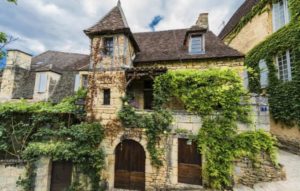
Today, Sarlat has managed to avoid any intrusions or clashes of modern architectural newcomers. It thrives on an interesting mix of beautifully preserved medieval and Renaissance buildings—introduced when a Florentine was appointed bishop in 1533—magnificent honey-coloured sandstone and timber-front houses and 15th and 16th century mansions with ornate stonework watching over the bustling streets and enticing medieval market town atmosphere. Also make sure to check out the 17th century Hotel de Ville on the east side of the main square, Place de la Liberté, while on the north side is the 14th century church-turned-indoor market.
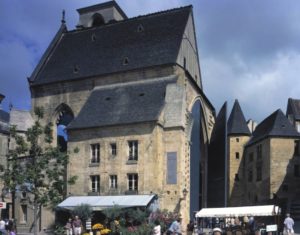
Although Sarlat has no modern visual intrusions, it has not turned its back on modern technology or conveniences. Concealed within the bell tower of Sainte-Marie is an ascenseur panoramique (panoramic elevator). It ascends 35m, and rewards you with stunning 360 degree panoramic views from the top, enabling the visitor to appreciate the layout of the town.
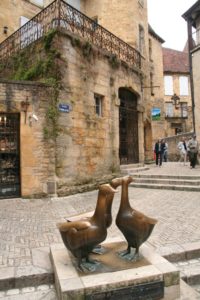
Aside from its magnificent architectural treasures, Sarlat is particularly renowned for its culinary heritage. Given what the region is famous for, one of the first things you’ll see in the square is the emblematic sculpture of three, life-size bronze geese. This should come as no surprise, as Sarlat is one of the region’s most renowned gastronomic hubs, where eating foie gras, indulging in truffles, washed down with the very good local wine isn’t something you save up to indulge in at Christmas!
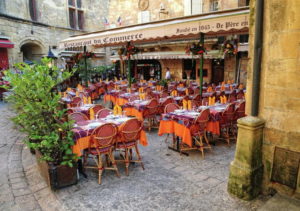
Michelin-starred restaurants, chic bistros, traditional cafes and farmhouse inns line the streets of Sarlat, enticing passers-by with their tempting menus.
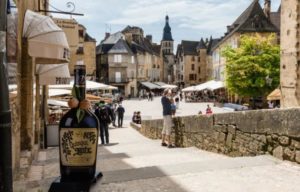
The dilemma is deciding which of these many quaint and enticing eateries to settle in to enjoy the local staples like duck, goose, truffles, porcini, chanterelle and morel mushrooms, nuts, strawberries, as well as local liqueurs and cognacs. This is not to say that the cuisine in Sarlat isn’t varied. One local, reliable favourite is ‘Les Quartre Saisons’, tucked away in a beautiful stone house on a narrow alley leading uphill from rue de la Republique. The food is honest and takes its cue from fresh, market ingredients and regional flavours.
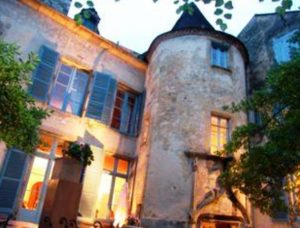
One of the most romantic places is ‘Le Petit Manoir’, housed in an ornate 15th century mansion where the cuisine combines creative Dordogne specialities with a touch of Asian fusion. There are also many more charming little bistros, whose menus tend to be aimed at visitors, focussed on Sarlat classics like walnuts, duck breast and the totally delicious pommes sarlardaises (potatoes cooked in duck fat)—probably something best not mentioned to your cardiologist!
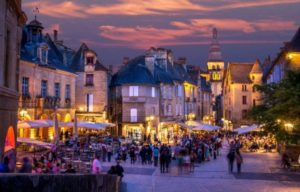
After such a dinner, a digestive stroll under the town’s vintage gas lamps shouldn’t be left off the agenda.

The weekly marchés (markets) have attracted shoppers and traders since the Middle Ages.

Every Wednesday and Saturday morning, locals flock to town for their weekly shopping, while visitors go from one colourful tent to another, sampling and buying the local products, including cans of artisanal foie gras and other duck and goose products (Confit de canard may be the most delicious thing you’ll ever eat from a can).
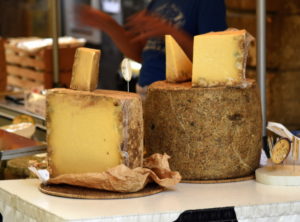
You’ll find it hard to walk past giant slabs of fruit cakes—nut, orange, fig—waiting to be sliced up and sold by the weight, mammoth hunks of nougat, huge wheels of mountain cheeses, pyramids of local goat cheese and a huge selection of olives. Delicious aromas fill the air and live music creates a friendly atmosphere, as seasonal delicacies such as truffles, cèpes, intensely flavoured tapenades, strawberries, white asparagus, honey, walnuts, including walnut oil (huile de noix), fill shoppers’ baskets.
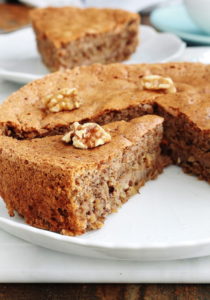
Speaking of walnuts, if you too love this nut, it’s one of the specialities of the Sarlat region. Look out for shops selling them—perhaps even in the covered market—and stock up with nutty souvenirs. Don’t miss the cerneaux de noix au chocolat (chocolate-covered walnuts) and gâteau de noix (walnut cake).
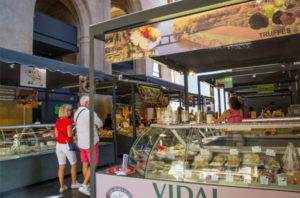
If you can’t make it to Sarlat on a market day, there is the year-round covered market, open daily until lunchtime. This is located in the former Église Sainte Marie, converted by hot-shot architect Jean Nouvel in 2002 into a market and cultural space. This project also included the conversion of the adjacent bell-tower. As well as the morning marchés, there is an organic night market on Thursday evenings and a themed Christmas Fair with around 40 wooden chalets selling locally made arts and crafts.
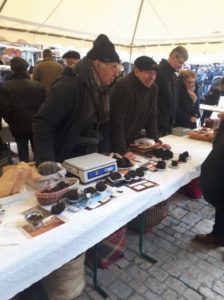
Among Sarlat’s most important events are the annual truffle festival, the Fete de la Truffe, in mid-January when the main restaurants have stands on Place de la Liberté where they offer samples of “Croustous”, a kind of Périgord tapas with truffle and foie gras, and a goose festival, the Fest’Oie in early March.
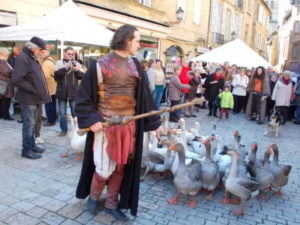
This major event is celebrated with large banquets prepared by the town’s top chefs, dozens of street animations and live music—along with about 200 geese running wild in the town centre! Perhaps a French answer to Pamplona’s running of the bulls?
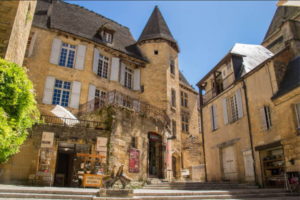
Other attractions you won’t want to miss is the ancient geese market on Place du Marché aux Oies, and along the rue des Consuls. This square and street contain many of the grandest houses in Sarlat, including Manoir de Gisson. This beautiful 13th century hotel particulier (townhouse), has been fully renovated and furnished, mostly in the 17th century style, and is open to the public, giving an interesting glimpse of what life was like inside these grand houses.
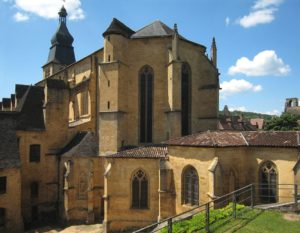
Heading south from Place de la Liberté, you reach Place du Peyrou and the Cathédrale de Saint-Sacerdos. Typical of so many similar buildings, the cathedral has undergone various extensions and changes since its establishment in 1317. Also on Place Peyrou, in front of the cathedral, there are several interesting buildings, including the Hotel de la Boetie, and the Hotel de Maleville. Between these two buildings is an alley called Passage Henri-de-Ségogne, along which you can see some of the oldest houses in Sarlat.
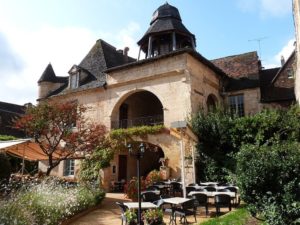
One of the most outstanding houses is Le Presidial, which was the seat of the Royal Court of Justice, set up by Henri II in 1552. You’ll find it in rue de la Salamandre. Further down this street is the 13th century half-timbered Hôtel de Grézel, renowned for its elegant Flamboyant Gothic staircase tower and arched doorway, which date from the 15th century.
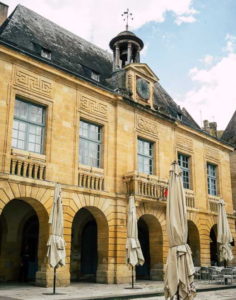
Make sure you also visit the Tourist Office, which is housed in the 15th century former bishop’s palace, and after the Revolution, became the Hotel de Ville, and previously the Courthouse, theatre and covered market before finally being converted to its current use.
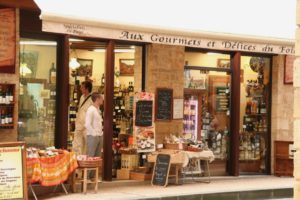
Sarlat is such a rewarding destination, with so many attractions to occupy the visitor for many happy days, and as well, it’s the perfect base for exploring this part of the Dordogne.
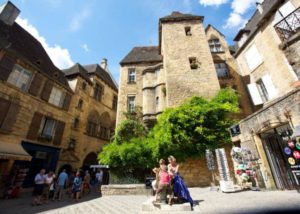


Wow, what a fantastic commentary on such a beautiful place. Oh to be able to wander through France and the Dordogne again
Hi Jenny,
Lovely to hear from you, and so delighted that you enjoyed reading about gorgeous Sarlat. It is truly one of the most rewarding town you could visit, and so handy for much of the Dordogne. After all the fantastic food on offer in the region, it’s just as well there’s lots of sight-seeing opportunities!! Yes, can’t wait to revisit Sarlat and so much more. Itching to pack the bags and head off again!
How wonderful. Would especially like to
see the Lanterne des Morts and of course
the bronze geese.
Hi Nadine,
The bronze geese are indeed highly desirable. Fortunately, they are well and truly embedded into their base, as I think they would’ve been the victims of “geese-napping” some time ago! The Lanterne des Morts is quite eerie, and still manages to convey a certain ‘atmosphere’. I’m not sure what St Bernard would’ve made of it.
Once again, thank you Cheryl . I was supposed to go here on an Albatross tour booked for last year, then postponed till this year & now next year maybe .
Hi Lois,
Hopefully, you’ll be able to warm up that lovely idea again in the very near future. There’s so much we all missed out on, travel-wise. We have a very, very long list of must-sees, and must-revisits!
Thanks Cheryl for bringing back wonderful memories of our visit in 2002.Love reading your wonderful stories.
Hi Sandy,
Lovely to hear from you, and I’m so delighted that reading about gorgeous Sarlat brought back such happy memories–it’s certainly a favourite of ours, and can’t wait to go back again–and I’m also thrilled that you enjoy the blog stories. Hopefully, we’ll all be allowed “out” again soon. We’ll hardly know ourselves!!